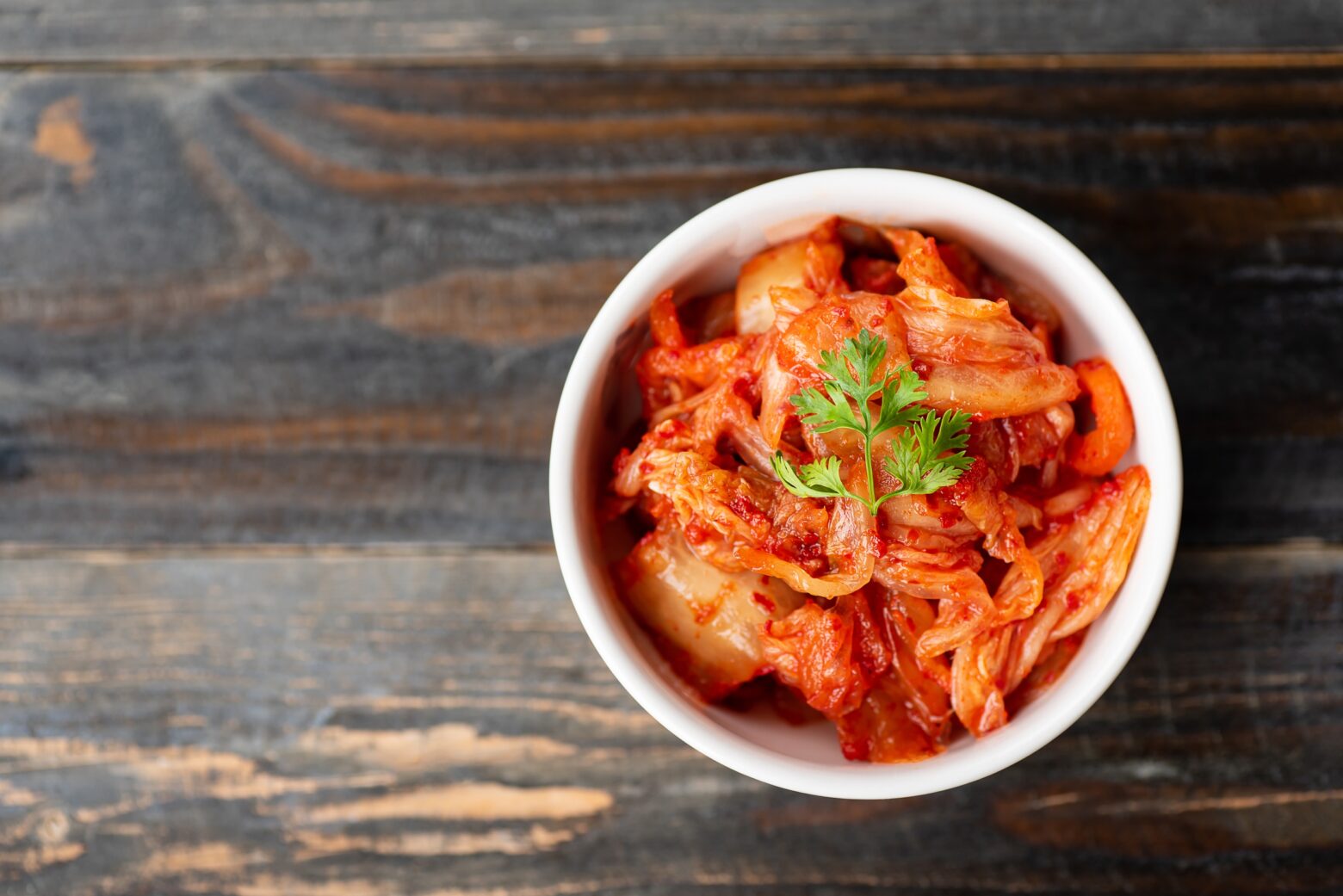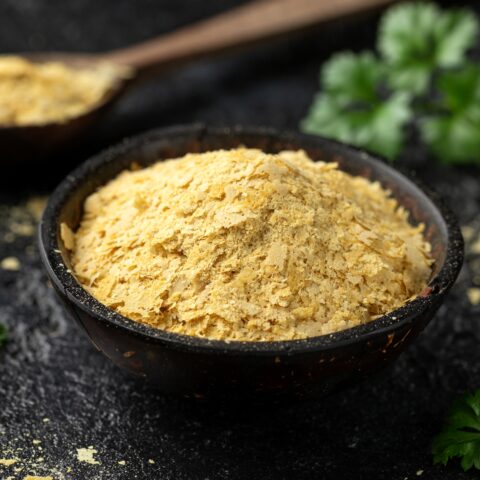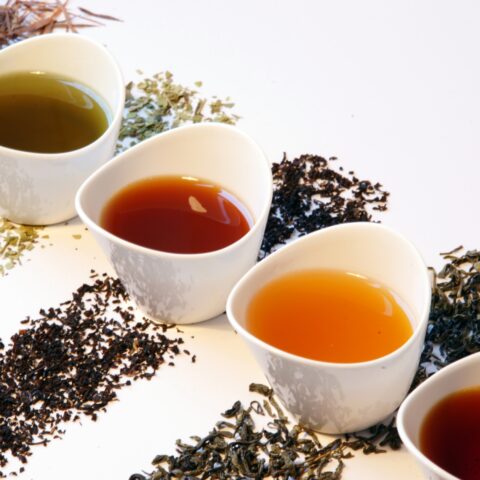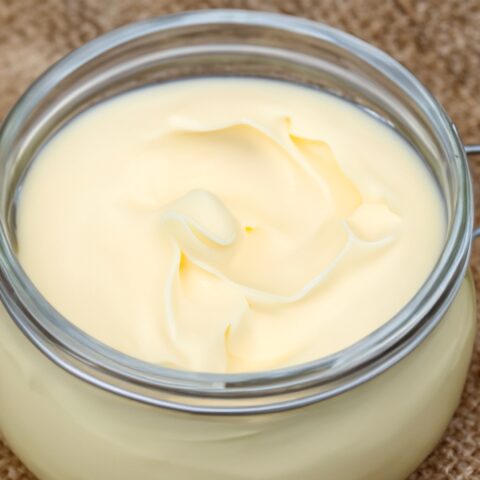Is Kimchi Paleo?

If you’ve ever eaten at a Korean Restaurant, you might have noticed kimchi on the menu. This spicy, fermented side dish is usually made with cabbage and flavored with red pepper, ginger, and garlic for a tangy final product that adds acidity to dishes with meat, eggs, and rice.
While kimchi is technically Paleo-friendly, the extra salt needed to make it, also makes it a little controversial. Let’s dive into how kimchi is made, how it can be beneficial for your health in small doses, and why you shouldn’t go overboard.
How kimchi is made
You don’t need any vinegar to make kimchi. That’s because it’s made by lacto-fermentation, the same process that creates healthy probiotics in foods like dill pickles, yogurt, and sauerkraut.
Lacto-fermentation works by soaking the cabbage (or other vegetables) in a salty brine to kill harmful bacteria, then rinsing it clean. You’re left with only the salt-resistant beneficial bacteria, or Lactobacillus. When you mix the veggies with the kimchi flavorings and seal them in a jar, it’s this healthy bacteria that converts the sugars into lactic acid. This helps preserve the kimchi while giving it the signature tangy flavor.
The health benefits of kimchi
Kimchi’s lactic acid isn’t just responsible for the tangy flavor, it also adds some healthy benefits.
Fermented foods with lactic acid contain promising probiotics that can help strengthen the immune system, ease metabolic disorders, and nourish a healthy gut. [1]
Specifically, research shows that the Lactobacillus probiotic strain can help soothe diarrhea, calm irritable bowel syndrome, and strengthen the lining of the intestines. [2]
The biggest drawback of kimchi
While kimchi might sound like a superfood, there is a significant drawback: It usually contains a large quantity of salt. That’s because most recipes require you to soak your veggies in a very salty brine in order to make it properly.
While some might say that added salt is okay, we prefer to avoid it as often as possible. Research shows that too much salt in your diet can lead to hypertension, which is a risk factor for other health issues like stroke and dementia.[3] Low sodium diets are sometimes prescribed in order to ease other ailments, like epilepsy and migraines. [4]
So, should I avoid kimchi altogether?
Since the salt content in most types of kimchi is so high, we don’t recommend that you eat it every day. However, that doesn’t mean that you can’t reap its health benefits in small doses.
Plus, one research study found that the high potassium content of kimchi helps to offset the risks of the added salt, and generally didn’t have a big effect on blood pressure levels. [5] While we often look purely at the absolute sodium levels in our diet, the sodium to potassium ratio is also very important to our health. In general, eating more potassium is great, especially if you’re concerned about consuming too much salt, as it partially helps to neutralize the negative effects of a high sodium diet. [6]
Here are some great sources of potassium that you can eat alongside your kimchi to ensure that the added salt isn’t doing more harm than good:
- Bananas
- Broccoli
- Mushrooms
- Oranges
- Sweet potatoes
Kimchi variations
Fortunately, it is possible to make kimchi with less sodium. Check out our Paleo-approved recipes for both low-sodium and no-sodium options.
You can also make your kimchi even healthier by adding a variety of veggies to the mix. Typically, kimchi is made with napa cabbage, but carrots, radishes, and kale all work just as well—and even better when you use them together. Scallions are a great addition to any kimchi recipe, as they add a welcome mildly sweet flavor.
When it comes to the spices you’ll use in your kimchi, almost anything is game. If you like your kimchi on the non-spicy side, you can omit any red pepper and make a paste using sweet pears instead.
If you really want to go for the spice, use the Korean chili powder liberally. Just be sure to go easy on the ginger, so it doesn’t end up sticky. Likewise, be careful not to go overboard on the garlic.
Kimchi serving ideas
Stumped on how to serve kimchi? Here are some ideas for keeping things fresh:
- Stir a bit of kimchi into your scrambled eggs instead of hot sauce. Cook until just heated through.
- Top your Buddha bowl with a scoop of kimchi.
- Add a bit to your ramen bowl.
- Love deviled eggs? Mix kimchi into the creamy yolks for a decadent new spin on finger food.
- Wrap them in Paleo tortillas with marinated beef for a spicy Korean twist on taco night.
Other Fermented Foods to Consider
Since most types of kimchi (as well as sauerkraut) are generally high in salt, we recommend eating it sparingly. However, if you’re looking for fermented foods that you can enjoy without the risk of hypertension and other conditions associated with high salt consumption, consider these low-sodium fermented foods:
- Dairy-free yogurt (just be careful of the sugar content)
- Kombucha
- Pickled veggies
And don’t forget to check out both our low-sodium and no-sodium Paleo recipes!
References
1. Zielinska, D. and D. Kolozyn-Krajewska, Food-Origin Lactic Acid Bacteria May Exhibit Probiotic Properties: Review. Biomed Res Int, 2018. 2018: p. 5063185.
2. Robertson, R. 9 Ways Lactobacillus Acidophilus Can Benefit Your Health. 2017; Available from: https://www.healthline.com/nutrition/lactobacillus-acidophilus.
3. Santisteban, M.M., et al., Abstract 104: Cerebrovascular and Cognitive Dysfunction in DOCA-Salt Hypertension is Mediated by Perivascular Macrophages. Hypertension, 2017. 70(suppl_1): p. A104-A104.
4. MILLER, M.M., Low sodium chloride intake in the treatment of insomnia and tension states. Journal of the American Medical Association, 1945. 129(4): p. 262-266.
5. Song, H.J. and H.-J. Lee, Consumption of kimchi, a salt fermented vegetable, is not associated with hypertension prevalence. Journal of Ethnic Foods, 2014. 1(1): p. 8-12.
6. Frassetto, L., et al., Diet, evolution and aging–the pathophysiologic effects of the post-agricultural inversion of the potassium-to-sodium and base-to-chloride ratios in the human diet. Eur J Nutr, 2001. 40(5): p. 200-13.
Lauren Fellows
Lauren Fellows is a experienced editor and content manager with nutrition and lifestyle brands. She has worked for multiple Paleo brands assigning and editing content.
More About The Author




